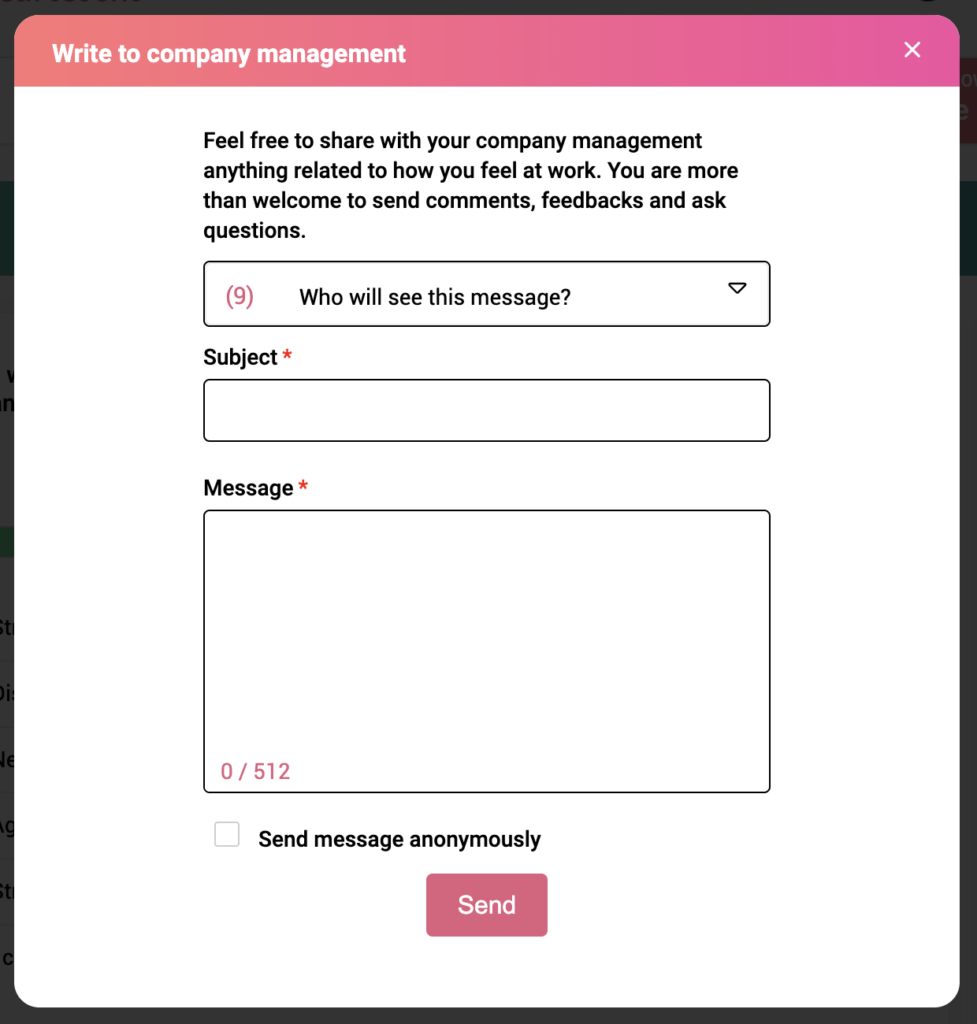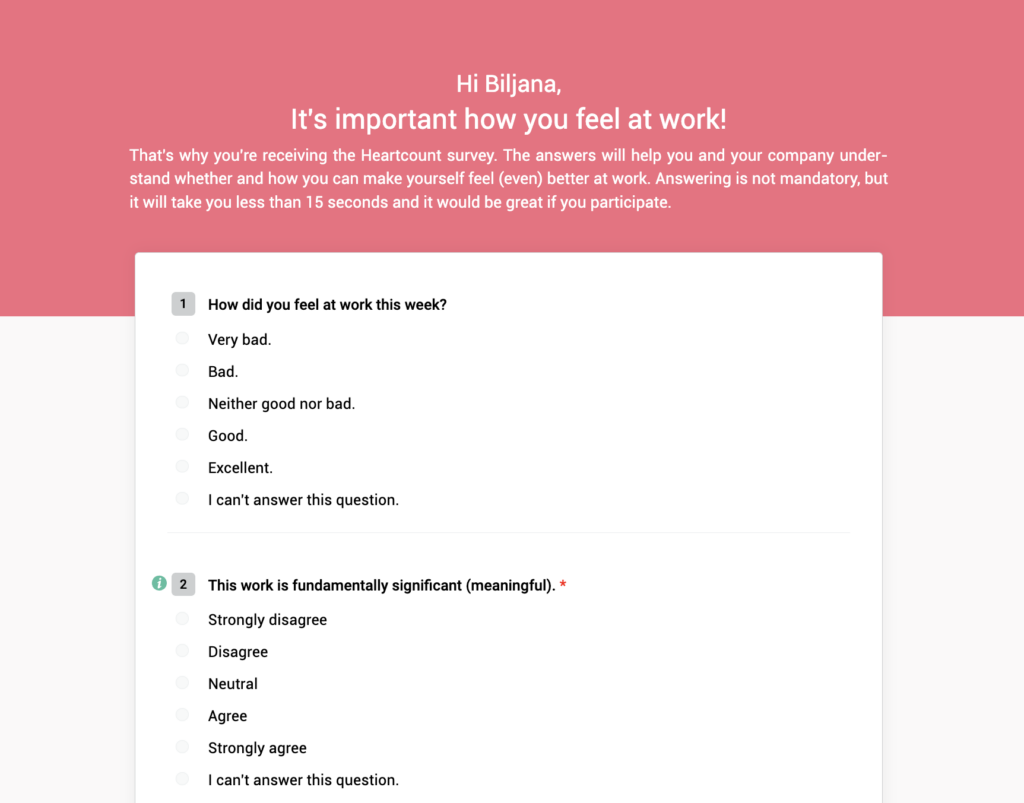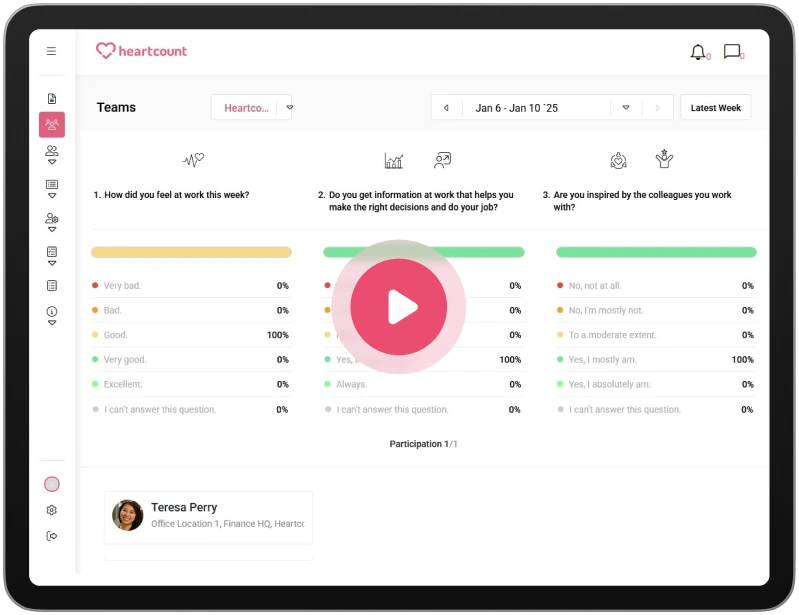How to Improve Employee Experience: 10 Essential Tips for Employers

Growth of competitiveness inevitably initiates multiple challenges we don’t have to think of while the market is plain. It’s no surprise there’s switching from employers to employee satisfaction as labor opportunities grow.
No matter if you’re a young or established company, if you tend to attract top-notch talent and loyal workers – well you need to take care of your due diligence. In the 21st century, it’s ensuring that your employee experience is marvelous.
Understanding how to improve employee experience can help you pick up on your retention and attrition rate, as well as lower the cost of hiring.
Growth of competitiveness inevitably initiates multiple challenges we don’t have to think of while the market is plain. It’s no surprise there’s switching from employers to employee satisfaction as labor opportunities grow.
No matter if you’re a young or established company, if you tend to attract top-notch talent and loyal workers – well you need to take care of your due diligence. In the 21st century, it’s ensuring that your employee experience is marvelous.
Understanding how to improve employee experience can help you pick up on your retention and attrition rate, as well as lower the cost of hiring.
How to measure employee experience
There’s the good old saying – What gets measured gets managed. So, the first step to improving employee experience is to understand what needs to be measured.
Essentially, it boils down to employees’ job satisfaction, work-life balance, and their view of business culture.
These are some of the approaches you could implement into your employee experience flow chart:
- Employee surveys: Regularly conducted surveys are one of the most direct ways to measure the employee experience. You can range them from annual engagement surveys to pulse surveys that ask for quick feedback on specific topics.
- Performance metrics: Employee performance data indirectly reflects their experience. Try to combine performance metrics with the rest of the approaches to get a better picture of employees’ overall motivation.
- Employee Net Promoter Score (eNPS): It’s an easy way to evaluate employee loyalty by asking how likely they are to suggest the company as a place to work. You can use the score as an awareness reference of employee sentiment and loyalty.
- Stay interviews: To understand better what keeps long-term employees in your company, conduct yearly interviews. You can use these insights to improve the experience for all employees in the long term.
- Social media and online reviews: Past and current employees often share their experiences on platforms like Glassdoor or LinkedIn. Make sure you take a look at those from time to time. You’ll be able to fetch an external perspective on how your company is perceived without any possibility of censorship.
- HR analytics: HR metrics can give you a more nuanced view of the employee experience. We won’t get into details in this very article, but make sure you set relevant KPIs. Tools can facilitate analysis of patterns in employee feedback and turnover rates, it’s good practice to invest in those as well.
- Exit interviews: Ideally, you want to determine employee experience before it leads to turnover. Exit interviews can explain why employees leave. It’s valuable feedback you get, without questioning the truthfulness of information.
Once you have gathered the data, it’s time to move on to the improvement process.
How to improve employee experience for real?
Improvement of employee experience won’t happen if you just write some guidelines here and there. You need to roll up your sleeves and get to work, for real.
1. Prioritize clarity and openness in communication
Open communication ensures all employees understand their roles, responsibilities, and the company’s goals. When employees are clear about what is expected of them and feel their voices are heard, they are more engaged and satisfied at work.
To improve internal communication:
- Schedule regular team meetings, and set clear agenda, goals, and Q&A sections if needed. You can organize them on a monthly or quarterly basis, depending on your company or department needs.
- Schedule regular one-on-one meetings with time dedicated to employee and his needs within the company.
- Set up an employee experience platform to encourage the sharing of opinions and feedback without censorship.
For example, with HeartCount you can enable employees to send anonymous weekly comments visible to their manager solely. They can also use the tool to write their concerns directly to higher management, with a choice of anonymity as well.

2. Optimize the onboarding process
A well-structured onboarding makes new employees feel welcome and valued. It also lowers anxiety and prepares them for the role they’ll have at the company.
Therefore, improving the onboarding is a no-brainer. Get yourself higher job satisfaction and retention rates with the following upgrades:
- Use digital onboarding platforms that provide everything a new employee will need in their first week in one place. You can include welcome videos, company policy handbooks, interactive training modules, and platforms for completing necessary paperwork.
- Assign a mentor or onboarding buddy to a new employee to provide him or her with a go-to person for questions and guidance.
- Regularly check in during the first few weeks and months of a new hire’s employment to ensure the new employee adjusts well and has the needed support.
For example, at HeartCount, we tend to have an onboarding buddy for social and technical onboarding. We combine it with online materials for better understanding of our mission, vision, and values. Additionally, our CEO is the one to have regular check-in meetings with new employees so there’s no chance of misalignment.

3. Support employees in professional growth
Identify and nurture individual employee skills and career aspirations. Specifically chosen training programs, mentorships, or courses can be the most desired benefit for ambitious individuals. It shows you’ll help them clear pathways to career progress.
To encourage professional growth and ensure a positive employee experience:
- Create personalized development plans for employees. Include workshops, seminars, or online courses relevant to their roles. For example, you can use LinkedIn Learning, Coursera, or Udemy for company-sponsored courses.
- Make regular career development discussions a part of performance reviews. It’ll allow employees to express their aspirations and you can set targets and supporting systems together.
This doesn’t have to drain your budget. You can organize specialists who’re already working at your company to act as mentors or trainers.
4. Create frequent feedback cycles
Frequent feedback cycles help identify and address issues sooner. They contribute to open communication and continuous improvement. Employees feel valued and heard when their feedback is actively prized and addressed. Obviously, this increases engagement and job satisfaction.
You can use HeartCount for quick and regular employee surveys. With this tool, you can schedule a simple weekly pulse survey with only three questions and an open feedback option.
It won’t take more than three minutes of your employee time, and yet you’ll understand their state and sentiment. At the same time, they’ll feel seen and valued and that you care about their opinion.

5. Provide working flexibility
Flexibility fosters trust and respect, which ultimately enhances the overall employee experience. Having this kind of autonomy also contributes to a better work-life balance, which is essential in today’s stressful work environment.
It’s no secret, that companies that offer flexibility are often seen as more attractive employers.
To provide flexibility, while maintaining accountability:
- Create clear guidelines for flexible, hybrid, and remote work options.
- Set up a remote-friendly environment. Use tools for project management to coordinate tasks effectively
- Encourage asynchronous communication through digital channels
- Schedule weekly planning and review meetings to ensure everyone is on the same page
For example, at HearCount we are working through hybrid mode in various locations. To keep everyone in the loop, we encourage detailed task information inside the task cards in our project management tool.

6. Encourage DEI initiatives
DEI stands for diversity, equity, and inclusion. It’s a holistic approach used in workplace culture. Simply put, DEI is an action-based plan that helps you create a culture of inclusion in your company.
By incorporating DEI initiatives you’re ensuring every team member feels welcome, appreciated, and heard, and that they’re given the opportunity to contribute to company goals with their talent without fear of discrimination.
Implement these initiatives through
- Diversity training programs
- Employee resource groups
- Diverse leadership and decision-making roles
- Establish clear policies and procedures to address discrimination and promote inclusivity.
- Regularly gather feedback about the company’s culture and inclusivity to improve continuously.
7. Upgrade working environment
It may look obvious that work conditions influence employees’ experience, yet it’s often overlooked.
How you furnish the office, position employees, hardware, and software they use can be valuable (de)motivators. To be more precise, it brings demotivation to a neutral position so you can start with any motivational inputs at all.
Hygiene of both on-site and digital working surroundings is crucial for people’s focus and overall satisfaction. If you don’t trust us, trust Herzberg and its two-factor motivation theory.
8. Prioritize employee well-being
Nurturing the culture of overworking and burnout can result in high turnover and not-so-lovable attrition rates. As it happens, by taking care of employees’ mental and emotional health you’re taking care of the sustainability of your company.
To help your employees maintain their health:
- Prioritize good project management and healthy boundaries within the organization
- Offer a specific wellness program, or subscriptions to wellness apps like Headspace, Calm, or Insight Timer
- Provide access to counseling services, such as BetterHelp, Talkspace or Selfnest
- Use HeartCount to detect possible emotional exhaustion within employees.
9. Invest in regular manager training
Being a manager and a leader is not something we’re born with. That’s why we tend to implement an onboarding specifically designed for managerial roles.
You’ve probably seen how moving an exceptional individual contributor to a managerial role backfired on an epic scale. This happens because the skills needed for managing projects and teams differ greatly from the technical ones.
Managers set the tone of the work environment, which influences employee engagement and satisfaction. So you don’t want to leave it to just go with the flow.
While self-paced courses and books can work, having programs established inside the company can work the best. Extra points if you include mentoring between higher and lower management in the flow.
Additionally, you can hire outside coaches who align with the company’s values to train managers for specific challenges.
10. Arrange proper incentives
Incentives encourage employees to consistently perform well. Therefore, on top of competitive salaries, offer rewards and benefits that acknowledge their hard work.
These include but are not limited to:
- Bonuses
- Flexible working conditions
- Health benefits
- Professional development opportunities
- Employee recognition programs.
You can also add non-monetary incentives like:
- Additional vacation days,
- flexible working hours,
- remote work options,
- wellness programs,
- professional development opportunities, such as conferences or training.
- Public recognition of employee achievements within the company
For example, with HeartCount you can encourage employees to leave kudos to each other that’s visible to the entire company.

Ensure a positive employee experience with the right approach
What you invest in the employee experience is precisely what you receive back – and we’re not talking about money exclusively.
Employees are up to 16 times more involved in a healthy work environment, and engaged teams have up to 59% lower turnover. Enough reasons to prioritize positive employee experience, don’t you think?
People stick with their employer if they are satisfied. This is important as most businesses find it much harder to retain their employees than to hire them.
Understanding and improving employee experience isn’t optional, it’s a necessity.
If your company has a high turnover rate, start by analyzing the kind of employee experience you offer.







